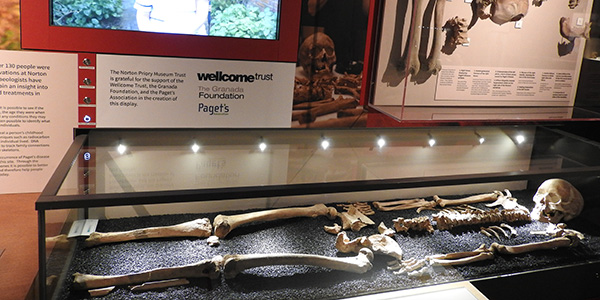
October 17, 2016, by Emma Thorne
Unlocking the chemical memory of ancient bones
As Halloween approaches and the shops begin to fill with stereotypical collections of plastic skeletons, researchers at the University of Nottingham are turning their attention to a collection of real bones dating back to medieval times.
In recent years at the largest monastic excavation in Europe, Norton Priory in Runcorn, more than 130 skeletons from the 13th-15th century have been unearthed. What is remarkable is that up to 40 per cent of these skeletons show characteristic signs of a bone disorder called Paget’s disease, a condition that was previously though to affect no more than 2 per cent of medieval populations.
Nottingham was recently recognised as a national Centre of Excellence for Paget’s research and in a project with the Norton Priory and Museums Trust, and colleagues at the University of Leicester who identified Richard III’s remains, the Nottingham team are using modern molecular approaches to try to solve the mystery of why so many of these people appear to have been affected.
Specifically by analysing proteins and DNA extracted from samples of the ancient bones the researchers are attempting to diagnose the precise form of Paget’s at Norton Priory and if the individuals were related in any way – in other words affected by a familial form of the disease.
Dr Rob Layfield from the School of Life Sciences tells us “Despite the remains being up to 700 years old, in some cases the protein and DNA is remarkably well preserved. Moving forwards it will be fascinating to perform tests which to bring these people ‘back to life’ and gain an insight into what it would have been like for them to be affected with a severe bone disease in an age with only rudimentary medicine. At this time of year it is good to think in a different way about these historical bones and what they can tell us about our ancestors and how they lived – and died”.
The Nottingham team are performing molecular analyses on medieval skeletal remains such as these in a new Wellcome Trust-funded display at Norton Priory Museum (pictured).
No comments yet, fill out a comment to be the first

Leave a Reply